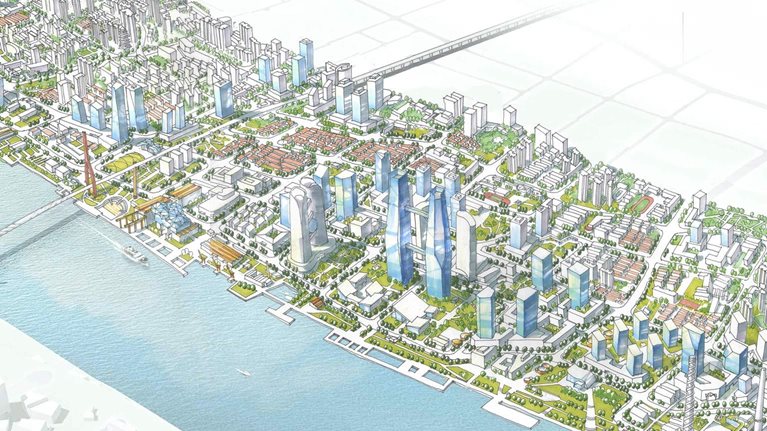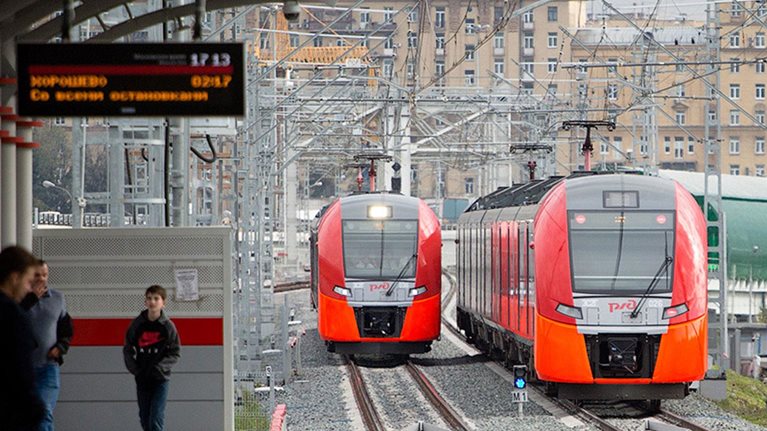In the next 15 years, about 200 million people will move from rural areas in India to the country’s urban centers. The shift will be massive, almost equal to the current populations of France, Germany, and the United Kingdom combined. While urbanization increases productivity and improves GDP per capita over the long term—by 2030, urban centers in India will generate nearly 70 percent of the country’s GDP1 —it also causes significant pressure in those urban centers. How can these cities plan to accommodate the growing population in terms of living space, jobs, and transport?
Stay current on your favorite topics
Government data estimates that India’s cities would need $1.2 trillion in capital funding over the next 20 years to keep up with the demands of their growing populations. But the country has nowhere near that amount to spend: India requires around $134 per capita to support urbanization capital expenditure (capex), but it actually spends around $20 per capita.2 This discrepancy has caused several problems: only 30 percent of sewage is treated, 24 percent of the urban population lives in slums, public transit usage is declining, and almost half of all city drivers spend more than 12 hours a week stuck in their car.3
And India is not alone in these struggles. Cities in many emerging markets are also facing similar strain as people flock to work and live in urban centers.
At first, it may seem counterintuitive to suggest that these cities, struggling to keep up with even their citizens’ most basic needs, should begin building themselves into smart cities. This is where it becomes important to broaden the definition of smart cities and not restrict it to implementation of just technology solutions. The right effort to make a city smart will incorporate a focus on sustainability, resource productivity, economic development, and job creation, as well as getting basic core infrastructure right to enable decent quality of living.
Would you like to learn more about our Capital Projects & Infrastructure Practice?
Several lessons for emerging markets around the world are to be found in India’s Smart Cities Mission, the government’s high-profile program to help its urban centers combat the challenges of urbanization. The program aims to assist several Indian cities in kick-starting urban renewal. While the program’s capex expenditure will fall short of the $1.2 trillion required to keep pace with urbanization, it’s an important start and offers several best practices for city leaders in emerging countries.
Engage citizens early and often
With limited funds, it is critical that cities use their money to solve the challenges that citizens are most concerned about. Thus, efforts must begin with a comprehensive citizen engagement initiative. Under India’s program, every city identified one or two core pan-city issues that it would like to solve. Different cities across India chose mobility, governance, water, energy, security, and solid waste management as their top themes. For example, while Pune selected mobility and water as the main pan-city themes, Bhubaneshwar selected intelligent city operations. Most cities that came out on top of the competition engaged extensively with residents to identify their core concerns. By asking citizens for their input from the very beginning, the program ensures citizen support later in the process—though this support also depends on maintaining two-way communication with citizens. City authorities must share updates on a regular basis while seeking input on progress, the quality of execution, and new ideas.
Use competition to improve quality of planning and to encourage innovative funding sources
The Smart Cities Mission granted funding to cities based on project proposals submitted by each city. The competition between cities resulted in high-quality submissions that identified specific objectives and resources and were aligned with citizens’ expressed priorities. While every city was given seed capital from the government, they were encouraged to come up with innovative sources of funding to bridge the gap between this seed capital and the money needed to fulfill their plans. These source ideas included land monetization, public-private partnerships, and other sources of revenue like developmental charges.
Think beyond technology
While technology is a primary driver of India’s smart-city development efforts, the government also encourages cities to think about development more holistically. Each city came up with a plan to develop a relatively small area (approximately 1,000 acres) and improve its living standards by addressing core infrastructure challenges such as water access, solid waste management, and open space. For example, Kochi devised a plan to retrofit seven square kilometers of land, linked throughout by waterways. This plan included the creation of seamless multimodal transportation, the renovation and renewal of open spaces, and the inclusion of essential public services such as sanitation, water, and waste management.
This approach had a threefold effect: citizens and city authorities imagined, for the first time, how a relatively small area could be developed and revitalized to achieve higher standards of livability; funding sources were more accessible for planning these pockets of land, given their smaller size; and citizens were more compelled to pay for these developments via betterment levies once they witnessed the real benefits of these neighborhoods.
Move rapidly on quick-win projects while keeping an eye on core issues
Identifying and rapidly executing quick-win projects is critical to building momentum and winning citizens’ confidence. In India, leading cities identified and implemented a set of quick-win projects such as rejuvenating urban spaces, redesigning streets, and deploying technologies including smart parking or integrated city applications. These projects demonstrated short-term results and increased stakeholder buy-in. At the same time, these cities also prioritized larger, long-term strategic projects, such as ensuring 24/7 water supply, and began making progress on them with the knowledge that such projects would take longer to implement.

Global Infrastructure Initiative
Convening global leaders in infrastructure and capital projects in pursuit of new solutions
One example of this quick-win strategy played out in Pune. Leaders set out on a quick-win placemaking mission—that is, creating public spaces that capitalize on existing assets to promote health, happiness, and well-being—to rejuvenate urban centers. The city redesigned streets to improve safety and walkability and brought multiple use cases to citizens through a smart element project that created and wove together six key components:
- Wi-Fi hotspots across strategic locations such as parks, hospitals, and other public spaces
- environmental sensors to monitor critical parameters such as air quality and noise pollution
- public announcement systems to broadcast both general and emergency messages to improve communication and public awareness
- an emergency response system to increase citizen safety
- a variable message system that deployed electronic display boards, placed across the city, to broadcast messages, alerts, and city updates
- a scalable command and control center, which assimilated data from all of these elements to monitor and manage smart-city operations from a single hub
Meanwhile, it kept an eye on the core issue of focusing on long-term mobility by working to enhance bus infrastructure and kick-start its metro project.
Think holistically about funding
Many cities came up with innovative ideas to fund the smart-city plan. For example, Bhubaneshwar established seven public-private partnership projects to raise $42 million (INR 2,725 cr), which covered almost half of its total smart-city plan cost of $70 million (INR 4,537 cr). The Smart Cities Mission also encouraged cities to think beyond capex to operation and maintenance, both in terms of funding and the operating model. For example, Pune used revenue from the operation of electrical buses to fund the operation and maintenance gaps as their bus fleet expanded.
Ensure vendor participation through a partnership approach
Many smart-city projects are relatively small, which does not attract large investors. And in India, some of these projects are being executed for the first time, which means the city must significantly rework the solution to apply locally. For example, implementing a sophisticated traffic management system in India or another emerging market is vastly different from doing so in a developed economy, as emerging markets tend to have a different transportation mix—for example, a large number of two-wheeled scooters and motorcycles. In such a situation, it is important to have a partnership mind-set to tailor and cocreate the solutions with vendors, so that these solutions are truly effective in the emerging-market context.
Citizens are not looking for one-off projects; they are looking for solutions that will fundamentally affect their lives. Following the above tactics in implementing a smart-city program can help leaders in emerging markets develop and achieve these solutions. And ensuring everyone across the value chain, especially city authorities, is aligned and focused on the solution is perhaps the single most important point that will make a smart-city mission successful.
Photo courtesy of Igor Ovsyannykov


